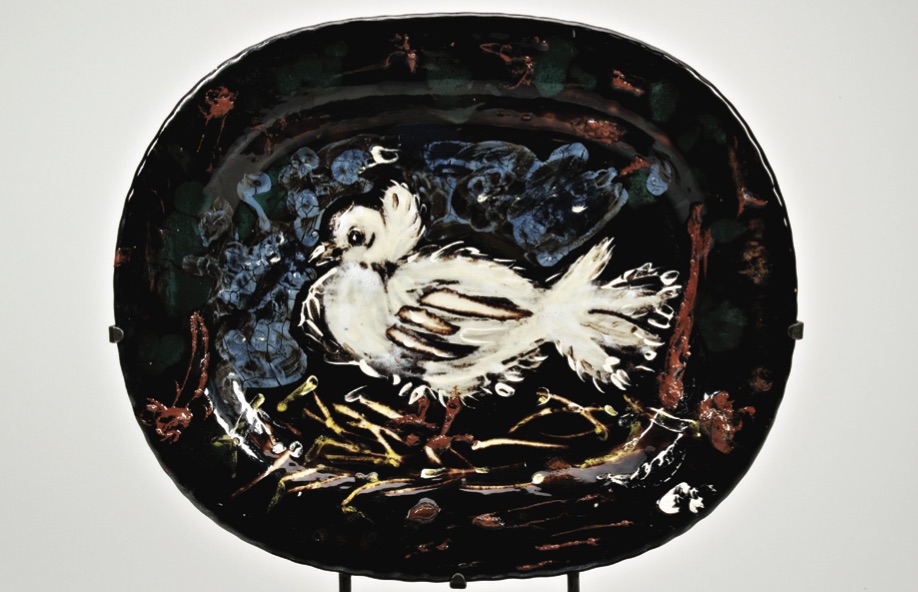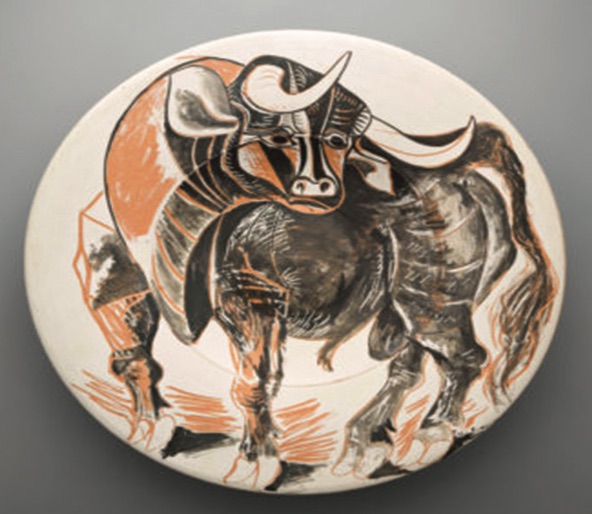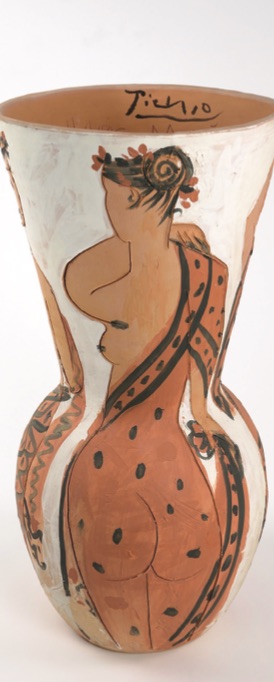Any international museum contributing to a specific sector of artistic production, hosting an exhibition dedicated to Pablo Picasso, can only increase its prestige. Such is the multifaceted brilliance of the artist considered to be the most influential and representative of the twentieth century. The title of the current ICM exhibition seems to be one of conflict: The Challenge of Ceramics will be held at the International Ceramics Museum until April 12, 2020. The press release indicates that "In the exhibition being held in Faenza, Picasso's sources of inspiration are analyzed, beginning from the artifacts of the ICM collections. The classic ceramics (black and red figures), the Etruscan bucchero wares, the popular Spanish and Italian ceramics, the Italian “graffito” (incised decoration) of the fifteenth century. The iconography of the Mediterranean area (fishes, fancy animals, owls and birds) and the earthenware of the Mesoamerican cultures will be the protagonists of a fruitful and unique dialogue."

But the main source of inspiration probably originates in the creative urgency never fully satisfied that animated the spirit of the artist from Malaga. In other words, it could perhaps be said that Picasso is unmistakably always Picasso, almost as if the philosophical principle of non-contradiction is of an utmost clarity. The artist refers to himself when he deepens his understanding and "faces a multiplicity of interests [...] and problems that he had been dealing with since the cubist period [...]." With the ingenious solutions used in painting female faces using brick fragments (cat. 7, 8, 10), Picasso manages to provide continuity to the features of the face, grafting them in difficult shapes. Just as the constant presence of the anthropomorphic element is undeniably Picassian, which, for example, is revealed in the artist's mastery in representing female sensuality. Painted and glazed terracotta, "Le quattro stagioni" (cat. 16) was created in 1950 and donated the following year by Picasso to the ICM in Faenza. The vase and the woman drawn on it seem to be one and the same. A tribute to female fertility is explicit in the vase: “Woman With Amphora" (cat. 1), and many other vases, amphorae or bottles are shaped by the artist's imagination to represent human features. Even in still lives, Picasso gives the impression of wanting to secretly play with anthropomorphic ambivalence: observing the Plate with knife, fork, apple cut in half and peels (cat. 50) do that fruit cut in half and the cutlery on the left perhaps represent a face and forearm and a hand?
If we compare the sources indicated above with Picasso's production, we find that in every field the artist leaves an unmistakable impression of himself. Beginning in 1947, the Spanish artist, in the Madoura atelier in Vallauris, not far from Cannes, assiduously devoted himself to ceramics. It is estimated that between that year and 1971 he came to produce between approximately 3,500 and 3,800 pieces. Aware of pursuing the Mediterranean tradition, Picasso has once said: "Here they made these things already thousands of years ago." One cannot obviously think of an explicit admission of misappropriation of the language of others. Reversing the previous words, however, we must say that, when Picasso proposed the models of antiquity, the permanence in time and space of those original forms is observed and implemented. Always in a delicate balance between modernity and antiquity, Picasso was the living testimony that there are indelible traces present in man since the mists of time. His art lies in the profound ability to reunite with those ancestral models, at the same time giving rise to modernity. The fundamental difference between the ceramics of the artist from Malaga and those of antiquity lies in the fact that those from the beginning were practical objects to be used in everyday life or to be used as symbols of fertility or in the context of votive worship, while contemporary ones are only conceived as realizations of an unstoppable and volcanic "Picasso project." Considering the fact that Picasso the man constantly transitions to the artist, the originality and specificity of the Faenza Exhibition lies in the fact that it is the only one dedicated exclusively to ceramics 70 of them planned - and we have already arrived at the programming of over 45 of them - as part of the project Picasso Mediterraneo. This design aims to explore and make available to all the results to which the studies on Picasso have come in relation to the traces left by the Spanish artist in the countries bordering the Mediterranean.
Le Musée national Picasso-Paris has loaned 50 ceramics in Faenza, in a perfect "dialogue with the popular classical ceramics, both Spanish and Italian." Contacts between Picasso and Faenza began in 1948 with the donation of the Dove of Peace, "a support for the reconstruction of the museum, after the allied bombing of May 1944." This is the third exhibition hosted in the city of Bologna and centred on the artist from Malaga, after those of 1960 and 1989. Extensive documentation of this important partnership - including photographs never previously published and a 1954 documentary by Luciano Emmer - are available today.
The exhibition is curated by Salvador Haro Gonzáles and Harald Theil, with the collaboration of Claudia Casali.


.


.jpg)



.png)